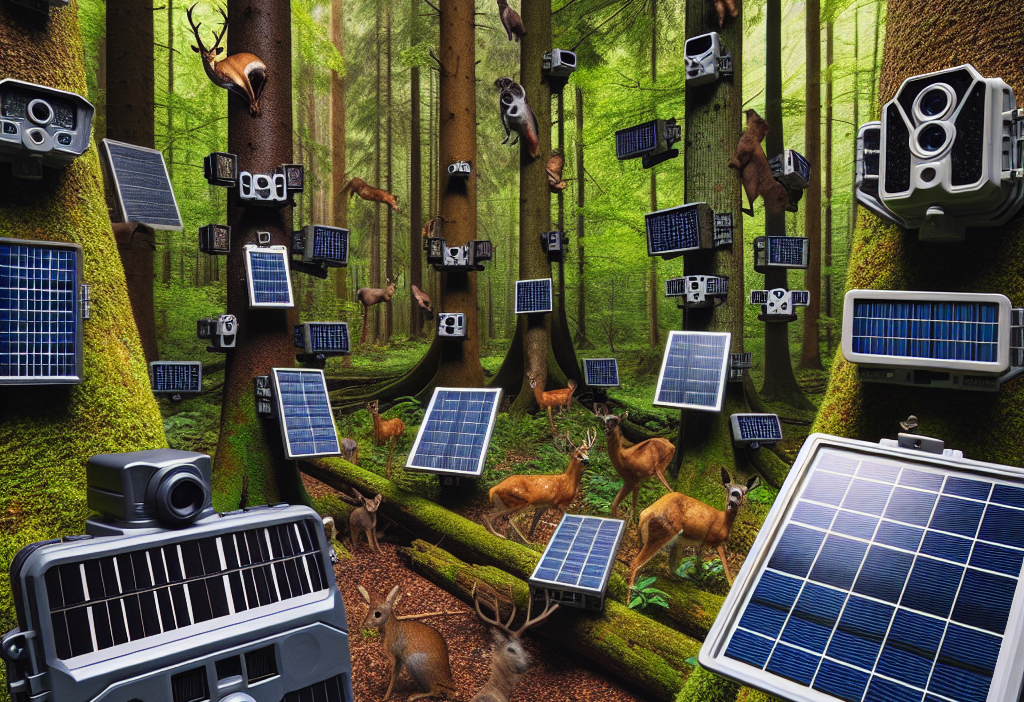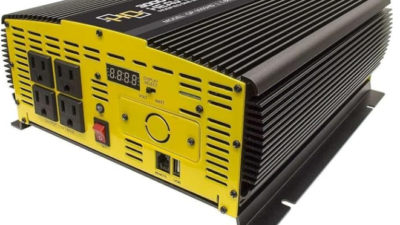Wildlife monitoring is a fascinating endeavor. It provides insights into the behavior and patterns of various species.
However, it can be challenging. Traditional methods often involve human intervention, which can disrupt the natural behavior of animals.
Enter solar trail cameras. These devices offer a sustainable and non-intrusive way to observe wildlife. They harness the power of the sun, eliminating the need for constant battery replacements.
In this guide, we’ll explore the top solar trail cameras for wildlife monitoring. We’ll delve into their features, benefits, and how they contribute to eco-friendly wildlife tracking.
Whether you’re a wildlife enthusiast, a hunter, or a researcher, this guide will help you make an informed decision. You’ll learn how to choose a solar trail camera that fits your needs and promotes sustainable practices.
Join us as we journey into the world of solar trail cameras, the future of wildlife monitoring.
Why Choose a Solar Trail Camera?
Solar trail cameras bring numerous benefits for wildlife monitoring. They reduce the need for frequent battery changes, saving time and resources.
Harnessing solar power is eco-friendly. It ensures a sustainable power source even in remote locations.
These cameras are versatile and adaptable. They’re perfect for anyone monitoring wildlife without access to conventional power.
Consider the following reasons to choose a solar trail camera:
- Sustainable energy source
- Reduced maintenance
- Cost-effective over time
In essence, solar trail cameras offer both convenience and sustainability. They pave the way for efficient and environmentally friendly wildlife observation.
How Solar Trail Cameras Work
Solar trail cameras capture images and videos using motion sensors. When wildlife enters a zone, the camera activates automatically.
The solar panel charges an internal battery. This battery powers the camera even when sunlight is minimal.
Most models feature a robust battery life. They ensure the camera remains operational during cloudy days or at night.
These cameras often include advanced features. Wi-Fi or cellular connectivity for remote data access is a common addition.
The design is rugged and weather-resistant. This makes them ideal for different environments and extended outdoor use.
Key Features to Consider
Selecting the right solar trail camera depends on various important features. These features enhance the camera’s functionality and reliability.
Consider the camera resolution first. Clear images and videos are crucial for wildlife monitoring.
Next, evaluate night vision capabilities. This ensures valuable footage is captured during low light conditions.
Motion sensors and trigger speed are also key. They determine how quickly the camera responds to movement.
Connectivity options play a significant role. Wi-Fi and cellular connectivity offer remote access to your data.
Battery life is critical. Reliable power efficiency ensures the camera functions continuously without frequent interventions.
Look for weather resistance and durability. This allows your camera to operate effectively in harsh conditions.
Finally, consider the ease of installation and maintenance. An easy setup process saves time and effort in the field.
Camera Resolution and Night Vision
High camera resolution is vital for detailed image capture. This aids in clear identification of wildlife.
In low light conditions, night vision becomes necessary. It ensures your camera functions effectively at night.
Choosing a camera with infrared technology enhances this capability. It reduces disturbances to nocturnal wildlife.
Motion Sensors and Trigger Speed
Motion sensors detect movement in the camera’s range. A fast trigger speed captures fleeting wildlife images.
Quick activation ensures that you don’t miss the action. It’s critical for accurate wildlife documentation.
A reliable sensor and speed combination enhances data quality. It reduces false triggers effectively.
Connectivity Options: Wi-Fi and Cellular
Connectivity options define how you access your camera data. Wi-Fi or cellular connectivity offers flexibility.
Wi-Fi allows easy remote control within a certain range. Cellular options facilitate data transfer over long distances.
Choose based on your monitoring needs. Consider signal availability in your target monitoring area.
Power Efficiency and Battery Life
Power efficiency is crucial for uninterrupted camera operation. It determines how long your camera can function.
Solar panels charge internal batteries, extending device runtime. This is essential for long-term wildlife observation.
A camera with good battery life reduces maintenance. It offers peace of mind during extended monitoring periods.
Top Picks for Solar Trail Cameras
Selecting the perfect solar trail camera can be overwhelming given the variety of options. To assist, we’ve curated a list of the top picks on the market. Each camera highlighted here excels in different areas, ensuring that there’s something for everyone.
1. Tactacam Reveal X-Pro 3.0

Tactacam Reveal X-Pro 3.0 is a cellular trail camera that offers a range of features aimed at enhancing the hunting and wildlife observation experience.
2. Tactacam Reveal Pro 3.0

Tactacam Reveal Pro 3.0 is a cellular trail camera designed for hunters and wildlife enthusiasts, offering a range of features that enhance usability and performance.
3. Stealth Cam Deceptor MAX

Stealth Cam Deceptor MAX is a cellular trail camera that offers a variety of features aimed at enhancing wildlife monitoring and hunting experiences.
4. Bushnell CelluCORE 20

Bushnell CelluCORE 20 is a cellular trail camera that offers a range of features suitable for wildlife monitoring and hunting.
Installation and Maintenance Tips
Proper installation ensures your solar trail camera performs optimally. Choose a location with ample sunlight for efficient solar charging. Avoid areas with heavy foliage or obstructions.
Securing the camera is vital to prevent theft or disturbance. Use sturdy mounts and appropriate locks. This minimizes the risk of it being tampered with or toppled over.
Routine maintenance extends the camera’s lifespan. Regularly clean the solar panels and check for debris. Ensure the lens is clear to maintain optimal image quality.
Consider weather resistance when selecting a placement. High-quality cameras are generally robust, but extreme conditions can affect them.
Here’s a quick checklist for installation and maintenance:
- Select a sunny, unobstructed location.
- Secure the camera with mounts and locks.
- Clean solar panels periodically.
- Inspect for damage after severe weather.
- Regularly update software for tech advancements.
These tips ensure your camera remains functional and durable for all your monitoring needs.
Frequently Asked Questions
Are solar trail cameras reliable in low-light conditions?
Solar trail cameras rely on sunlight to charge. However, quality models store energy for cloudy days. They work effectively even in dimmer conditions.
How long does the battery last?
A full charge can last weeks. It depends on usage, the number of triggers, and standby mode efficiency. Battery life varies by model.
Do these cameras need Wi-Fi to function?
Wi-Fi isn’t necessary for basic functions. It enhances remote access and storage features, but standalone operation is possible without it.
Can I use a solar trail camera for home security?
Yes, they provide an excellent surveillance option. Their motion detection is adaptable for monitoring both wildlife and home environments.
What maintenance do solar trail cameras require?
Minimal maintenance is needed. Regular panel cleaning and periodic checks ensure efficiency. Keep the lens free from debris for clear captures.
Conclusion and Final Thoughts
Solar trail cameras offer a sustainable solution for wildlife enthusiasts. They blend technology with environmental stewardship, making them indispensable tools.
Choosing the right model depends on your specific needs. Features like connectivity, power efficiency, and camera resolution play crucial roles.
Investing in a solar trail camera ensures long-term benefits. It supports eco-friendly practices while delivering reliable wildlife monitoring capabilities.



